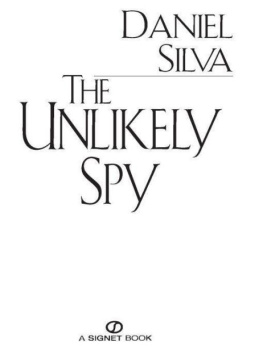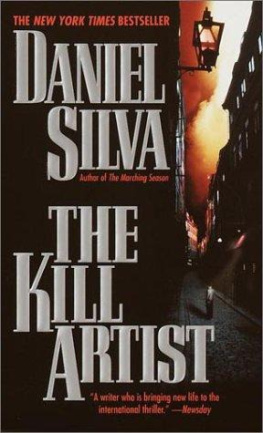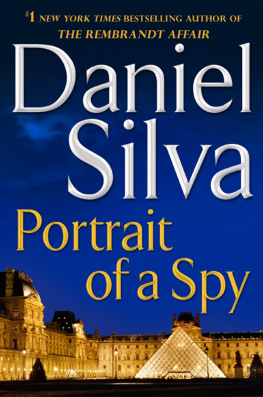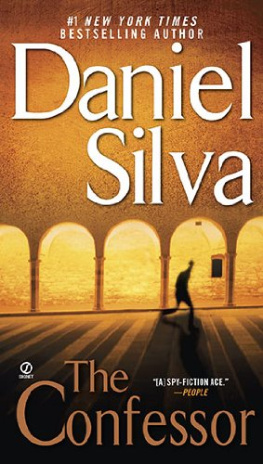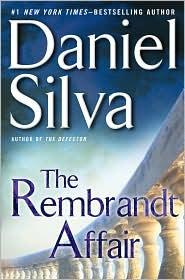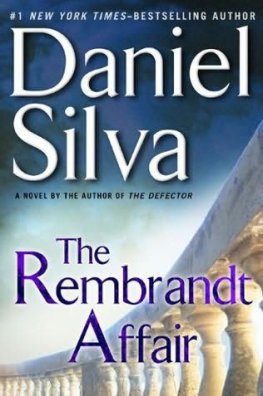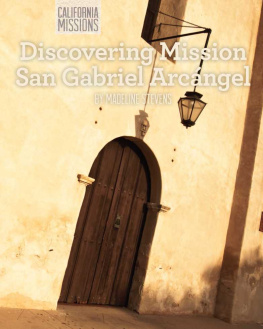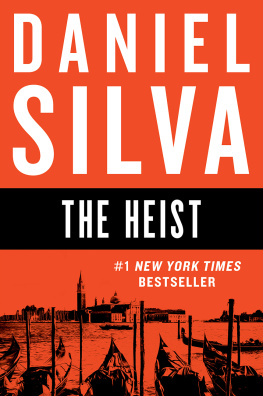
Daniel Silva
The Kill Artist
Gabriel Allon 1
The Kill Artist is a work of fiction and should be construed as nothing but. All characters, locales, and incidents portrayed in the novel are products of the authors imagination or have been used fictitiously. Any resemblance to any person, living or dead, is entirely coincidental. However, in order to add verisimilitude to the story and the characters, I have drawn from real episodes in the secret war between Israeli intelligence and the Palestinian guerrillas. For example, the 1988 assassination of PLO commando leader Abu Jihad happened much as it is portrayed, with minor modifications. Francesco Vecellio is a real Italian old master painter-indeed, he was the lesser-known brother of Titian-but The Adoration of the Shepherds portrayed in the novel is fictitious. Sadly, the London art gallery portrayed in The Kill Artist does not exist and neither does its owner.
Vienna: January 1991
The restorer raised his magnifying visor and switched off the bank of fluorescent lights. He waited for his eyes to adjust to the murkiness of evening in the cathedral; then he inspected a tiny portion of the painting just below an arrow wound on the leg of Saint Stephen. Over the centuries the paint had worn completely down to the canvas. The restorer had so carefully repaired the damage that without the use of specialized equipment it was now quite impossible to tell his work from the original, which meant he had done his job very well indeed.
The restorer crouched on the work platform, wiped his brushes and palette, and packed away his paints into a flat rectangular case of polished wood. Nightfall had blackened the soaring stained-glass windows of the cathedral; a blanket of new snow had muffled the usual hum of the Vienna evening rush. So quiet was the Stephansdom that the restorer would scarcely have been surprised to see a medieval sexton scurrying across the nave by torchlight.
He climbed off the high scaffolding with the agility of a house cat and dropped silently onto the stone floor of the chapel. A knot of tourists had been watching him work for several minutes. As a rule the restorer did not like spectators-indeed, some days he shrouded the platform in a gray tarpaulin. Tonights crowd dispersed as he pulled on a reefer coat and woolen watch cap. Softly, he bid them buona sera, instinctively recording each face in his mind, as permanently as if they were rendered with oil on canvas.
An attractive German girl tried to engage him in conversation. She spoke to him in poor Italian. In rapid, Berlin-accented German-his mother had lived in Charlottenburg before the war-the restorer said he was late for an appointment and could not talk now. German girls made him uneasy. Reflexively his eyes wandered over her-across her large, rounded breasts, up and down her long legs. She mistook his attention for flirting, tilted her head, smiled at him through a lock of flaxen hair, suggested a coffee in the caf across the square. The restorer apologized and said he had to leave. Besides, he said, looking up at the soaring nave, this is Stephansdom, Fralein. Not a pickup bar.
A moment later he passed through the entrance of the cathedral and struck out across the Stephansplatz. He was of medium height, well below six feet. His black hair was shot with gray at the temples. His nose was rather long and angular, with sharp edges across the bridge that left the suggestion it had been carved from wood. Full lips, cleft chin, cheekbones broad and square. There was a hint of the Russian steppes in his eyes-almond shaped, unnaturally green, very quick. His vision was perfect, despite the demanding nature of his work. He had a confident walk, not an arrogant swagger or a march but a crisp, purposeful stride that seemed to propel him effortlessly across the snowbound square. The box containing his paints and brushes was under his left arm, resting on the metal object that he wore, habitually, on his left hip.
He walked along the Rotenturmstrasse, a broad pedestrian mall lined with bright shops and cafs, pausing before shop windows, peering at sparkling Mont Blanc pens and Rolex watches, even though he had no need for such things. He stopped at a snow-covered sausage stand, purchased a ksewurst, dropped it into a rubbish bin a hundred yards away without taking a bite. He entered a telephone booth, slipped a schilling into the coin slot, punched a random series of numbers on the keypad, all the while scanning the street and storefronts around him. A recorded voice informed him that he had made a dreadful mistake. The restorer replaced the receiver, collected his schilling from the coin tray, kept walking.
His destination was a small Italian restaurant in the Jewish Quarter. Before the Nazis there had been nearly two hundred thousand Jews living in Vienna, and Jews had dominated the citys cultural and commercial life. Now there were just a few thousand, mainly from the East, and the so-called Jewish Quarter was a strip of clothing stores, restaurants, and nightclubs clustered around the Judenplatz. Among Viennese the district was known as the Bermuda Triangle, which the restorer found vaguely offensive.
The restorers wife and son were waiting for him-rear table, facing the door, just as he had taught her. The boy sat next to his mother, sucking strands of buttered spaghetti through rose-colored lips. He watched her for a moment, appraising her beauty the way he might assess a work of art: the technique, the structure, the composition. She had pale olive-toned skin, oval brown eyes, and long black hair, which was drawn back and lying across the front of one shoulder.
He entered the restaurant. He kissed his son on the top of the head, chatted in Italian with the man behind the bar, sat down. His wife poured wine for him.
Not too much. I have to work tonight.
The cathedral?
He pulled down his lips, cocked his head slightly. Are you packed? he asked.
She nodded, then looked at the television above the bar. Air-raid sirens over Tel Aviv, another Iraqi Scud missile streaking toward Israel. The citizens of Tel Aviv putting on gas masks and taking shelter. The shot changed: a tongue of fire, falling from the black sky toward the city. The restorers wife reached across the table and touched his hand.
I want to go home.
Soon, the restorer said and poured himself more wine.
She had left the car on the street just outside the restaurant, a dark blue Mercedes sedan, Vienna registration, leased by a small chemical company in Bern. He placed the boy in the backseat, buckled his safety belt, kissed his wife.
If Im not there by six oclock, something has gone wrong. You remember what to do?
Go to the airport, give them the password and the clearance number, and theyll take care of us.
Six oclock, he repeated. If I dont walk through the door by six oclock, go straight to the airport. Leave the car in the parking lot and throw away the keys. Do you understand me?
She nodded. Just be home by six.
The restorer closed the door, gave a terse wave through the glass, and started to walk away. In front of him, floating over the rooftops of the old city, was the spire of the cathedral, ablaze with light. One more night, he thought. Then home for a few weeks until the next job.
Behind him he heard the starter of the Mercedes engage, then hesitate, like a record album being played at the wrong speed. The restorer stopped walking and spun around.
No! he screamed, but she turned the key again.
Port Navas, Cornwall: The Present
Next page

